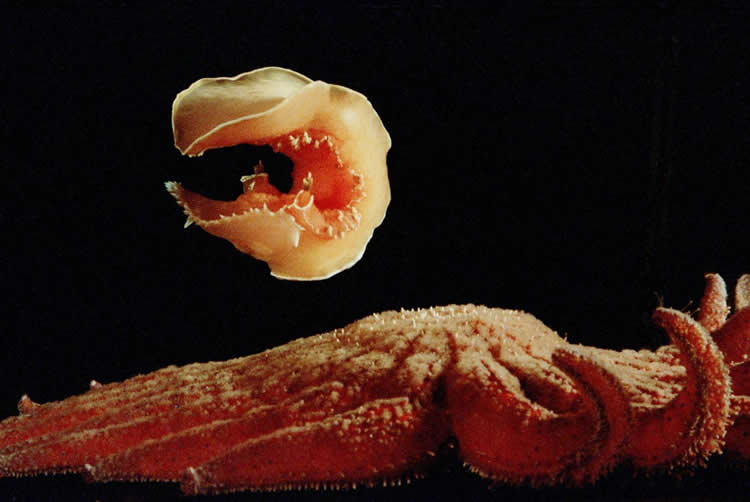Sea slug study reveals novel memory mechanism.
Neuroscientists at Rosalind Franklin University of Medicine and Science have discovered that some neurons are joiners — seemingly eager to link-up with networks in which learning is taking place.
The findings, which will appear this week in the journal Current Biology, have implications for how brain networks can rapidly adjust to build memories.
“In a prior study, we discovered neurons, whose participation in networks varies on a moment-to-moment basis, displaying a surprising ambivalence about their commitment to the network’s function,” said William Frost, PhD, professor and chair of the Chicago Medical School Department of Cell Biology and Anatomy. “At the time, we didn’t know why the nervous system would contain neurons that behave this way. Here we find that such variably-affiliated neurons appear to be pre-positioned for rapid recruitment into memories.”
The discovery represents a shift from the field’s long-term focus on synaptic plasticity — changes in the strength of the connections between neurons in response to learning — toward a view that certain neurons have characteristics that predispose them to join memories.
The study, which examined neural networks in the sea slug Tritonia, went on to track the same neurons as the memory faded, and found that the network didn’t simply return to its pre-training state. Instead, many of the new neurons stayed with the network and some of the original neurons departed. So even though all behavioral evidence of learning was gone, the network was left in an altered state, possibly revealing the presence of a latent memory.

In a key experiment, the team isolated a potential mechanism driving memory formation. Driving two specific neurons in the same way they fire during learning, researchers implanted a false memory.
“The animal displayed a learned response, even though it had no actual experience,” said Evan Hill, PhD, the study’s lead author.
Insights into the mechanisms controlling neuron reassignment could contribute to the development of new strategies for nudging neurons into functional circuits following brain injury, Frost said.
Funding: The research was funded by National Science Foundation, National Institutes of Health.
Source: Judy Masterson – Rosalind Franklin University of Medicine and Science
Image Source: The image is credited to William Frost, PhD
Original Research: Abstract for “Memory Formation in Tritonia via Recruitment of Variably Committed Neurons” by Evan S. Hill, Sunil K. Vasireddi, Jean Wang, Angela M. Bruno, and William N. Frost in Current Biology. Published online November 5 2015 doi:10.1016/j.cub.2015.09.033
Abstract
Memory Formation in Tritonia via Recruitment of Variably Committed Neurons
Highlights
•A functional network rapidly expands as a short-term memory forms
•Memory formation involves recruitment of a pre-positioned pool of neurons
•The network does not return to its original state after the memory dissipates
•Driving serotonergic neurons implants a false memory for sensitization
Summary
Prior studies have found that functional networks can rapidly add neurons as they build short-term memories, yet little is known about the principles underlying this process. Using voltage-sensitive dye imaging, we found that short-term sensitization of Tritonia’s swim motor program involves rapid expansion of the number of participating neurons. Tracking neurons across trials revealed that this involves the conversion of recently discovered variably participating neurons to reliable status. Further, we identify a candidate serotonergic cellular mechanism mediating this process. Our findings reveal a new mechanism for memory formation, involving recruitment of pre-positioned, variably committed neurons into memory networks. This represents a shift from the field’s long-term focus on synaptic plasticity, toward a view that certain neurons have characteristics that predispose them to join networks with learning.
“Memory Formation in Tritonia via Recruitment of Variably Committed Neurons” by Evan S. Hill, Sunil K. Vasireddi, Jean Wang, Angela M. Bruno, and William N. Frost in Current Biology. Published online November 5 2015 doi:10.1016/j.cub.2015.09.0332






